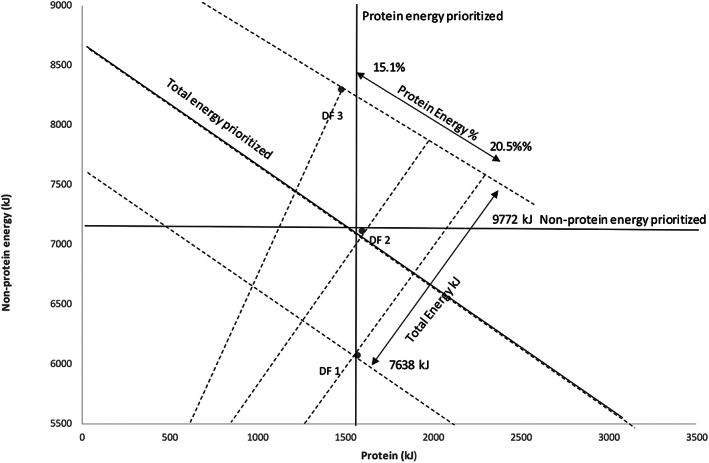FIGURE 5.

Protein and nonprotein energy intakes by respondent group of discretionary food intake. If the respondents prioritized total energy intake, regardless of its macronutrient source, the data would align along a negative‐sloped diagonal representing constant energy intake (x + y = constant); if nonprotein energy was prioritized, the data would align along a horizontal line (y = constant); and if protein was prioritized, the data would align along a vertical line (x = constant). The analysis shows that the respondents maintained absolute protein intake relatively tightly, with nonprotein energy intake varying more passively with dietary macronutrient ratios. Protein density decreased with larger intake of discretionary foods (ranging from 20.5% for respondents categorized as discretionary food consumption tertile 1 to 15.1% for respondents from tertile 3), and total energy intake increased (from 7638 kJ for tertile 1 to 9772 kJ for tertile 3). Data are adjusted for age, sex, Socio‐Economic Indexes for Areas, country of birth, energy intake to basal metabolic rate ratio.
